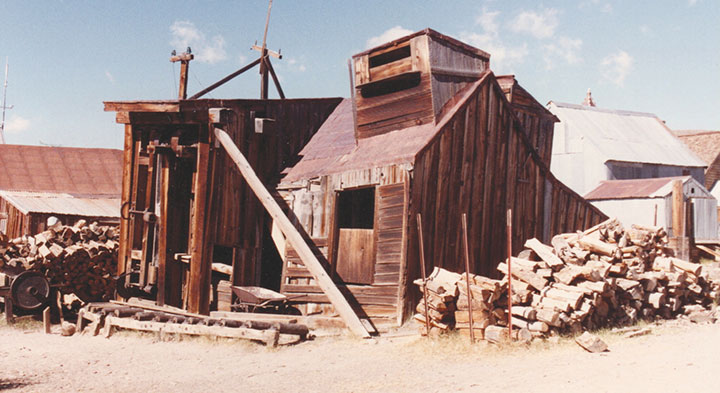The track plans of the Eureka Mill Railroad in Finescale Railroader and the Gazette show a firewood sawmill down stream along the flume. I assume there was a need for firewood in the miner’s shacks for cooking and heating. Then there was that little Porter, and the various mills. The early mills were water powered, but later had furnaces that needed fuel. I can see no other fuel coming into the mills. No coal, no oil, just wood. So, a special sawmill was needed to supply this fuel.
I found little information on the internet about firewood mills, mostly about portable rigs to be hauled around by a pickup for chopping firewood.
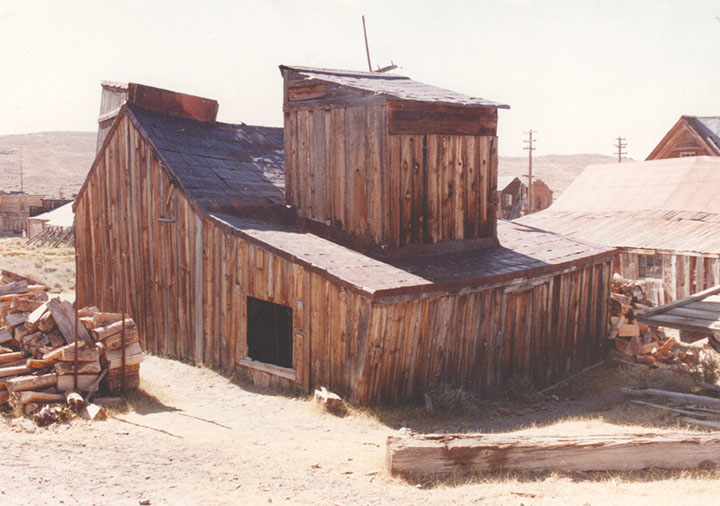
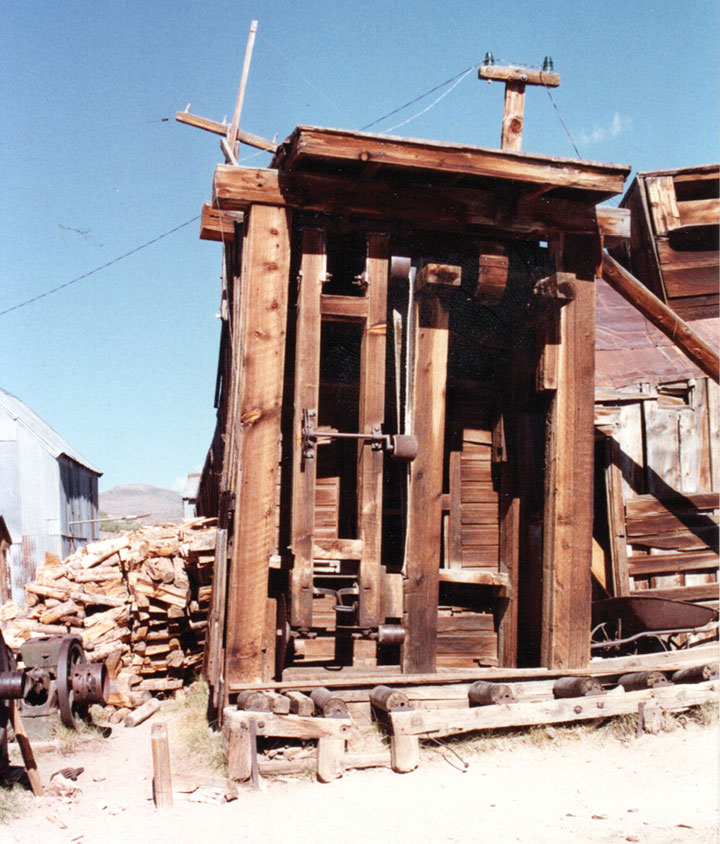
However Gazette plan maker Neil Pfafman had drawn plans for the Bodie, California firewood sawmill, and they were in the March/April 2020 Gazette. Irene and I had visited Bodie in 1988, and I photographed the remains of this sawmill thinking one day I would build a model of it. So, out came my photos, copies of Neil’s plans, and I got busy. But I did have questions about the Bodie sawmill. Why was it there? Bodie was served by the 3-foot gauge Bodie & Benton Railroad. This line once ran some 30 miles, over a switchback, from a sawmill on the shore of Mono Lake to a depot (still there) on a bluff above Bodie. Its main function was to haul firewood to Bodie for the town and the Standard Mill. So, why the little Bodie firewood sawmill? I did a little research and found that the B&B was torn out in 1918 cutting off the supply of firewood to the town. So I am assuming the Bodie firewood sawmill was built after 1918 to supply needed firewood.
The Bodie firewood sawmill is an odd looking building. It looks like it was added onto, and what are those two cupola-like structures jutting out of the roof? I emailed Neil and asked if he knew what was inside the sawmill, what powered the saw, and what were those cupolas? He did not know about the interior, or power source, but had found a gasoline engine lying outside the building. He thought the cupolas might be skylights.
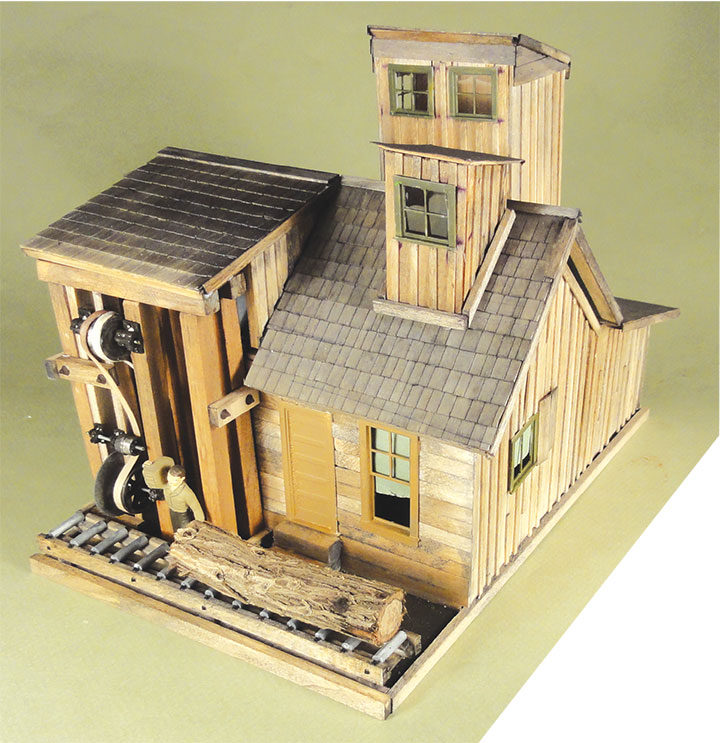
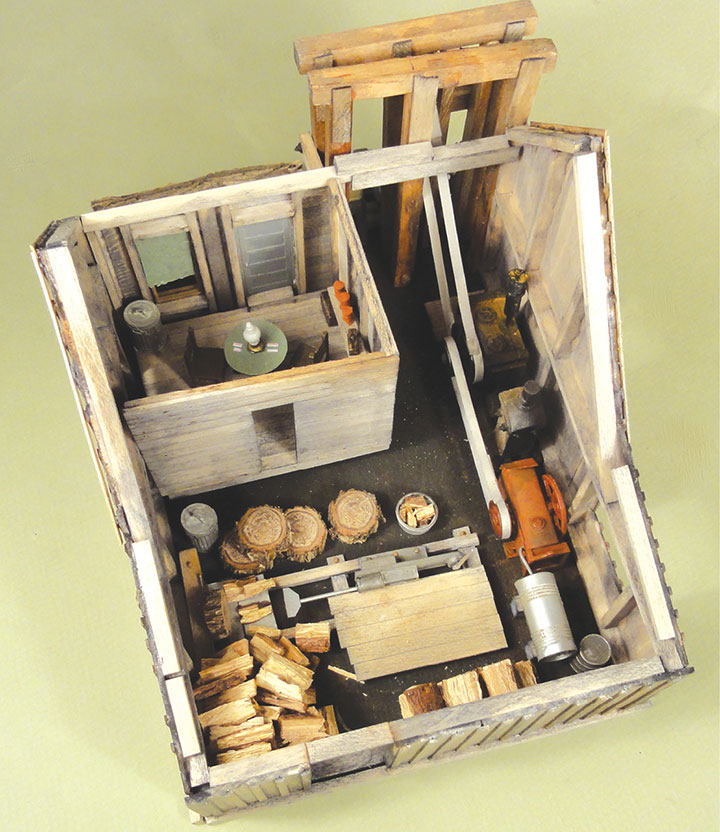
Armed with this information, I built my mill using scribed sheet basswood. I covered the scribes in the walls with heavy battens, added some peel-and-stick shingles, and heavily weathered the building with Hunterline Grey, Brown, and Rust. I used Hunterline Black on the shingles and was happy with the results.
But what about the interior? I decided I needed a gasoline engine, compressor, air tank, and a pneumatic splitter. So, I modified an old Don Winter Harr-Parr tractor kit into a portable power source. I scratchbuilt the compressor, added a small air tank, and scratchbuilt my splitter. I reasoned a worker would cut slices off a log on the saw in front of the mill, roll them into the mill, and split the slices into kindling on the splitter. Neil’s plans had a nice door and window on the front of the mill. These could have been taken from another more elegant building when the mill was built, but I reasoned there must have been a room in the building and added one with a table and chairs.
I enjoyed building my firewood sawmill, and am pleased with it. It looks quirky, like the prototype, and weathered well. I always enjoy adding interiors, and the saw, belting, and rollway out front were fun. All in all a satisfying model.
